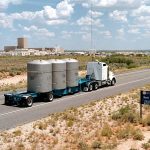 The US Environmental Protection Agency’s (EPA) hazardous waste manifest system is designed to track hazardous waste from the time it leaves the generator facility where it was produced, until it reaches the off-site waste management facility that will store, treat or dispose of the hazardous waste. In 2014, the EPA established a national system for tracking hazardous waste shipments electronically. This system, known as “e-Manifest,” is intended to modernize the nation’s cradle-to-grave hazardous waste tracking process while saving valuable time, resources, and dollars for industry and states. EPA launched e-Manifest on June 30, 2018, along with user fees to offset the cost of the EPA developing the electronic manifest.
The US Environmental Protection Agency’s (EPA) hazardous waste manifest system is designed to track hazardous waste from the time it leaves the generator facility where it was produced, until it reaches the off-site waste management facility that will store, treat or dispose of the hazardous waste. In 2014, the EPA established a national system for tracking hazardous waste shipments electronically. This system, known as “e-Manifest,” is intended to modernize the nation’s cradle-to-grave hazardous waste tracking process while saving valuable time, resources, and dollars for industry and states. EPA launched e-Manifest on June 30, 2018, along with user fees to offset the cost of the EPA developing the electronic manifest.
There are a few changes in the way that electronic manifests are prepared from the traditional paper manifest system. Let’s review some of the updates.
- e-Manifests may now be prepared by the Treatment, Storage or Disposal Facility (TSDF). Under the RCRA Regulations (40 CFR 172.205(b) the generator of the hazardous waste is required to prepare the manifest. Now, the TSDF can initiate the process using the e-Manifest. In practicality, the TSDF (or a hazardous waste broker) prepared the paper manifest.
- The paper manifest is now only 5 pages, instead of 6. (I remember the original manifests were 8 pages, with carbon paper). 6 copies were necessary so that all parties (generator, transporter and TSDF) involved in the transaction received a copy. Additionally, both the generator and TSDF sent a copy to the generator’s state environmental agency (if required), and the TSDF mailed a copy back to the generator. This was changed by the EPA to reflect the new requirement that manifest is now only sent to the EPA. The EPA will electronically distribute the manifest to the state agency.
- If a paper manifest is used, the receiving facility must submit the manifest to EPA within 30 days of receipt. Receiving facilities have several options for submitting paper manifests to EPA, including mailing in paper manifests, sending a scanned image of a paper manifest or submission of image and data files via e-Manifest. The generator will no longer receive a copy from the TSDF.
- EPA will charge receiving facilities a fee for each manifest submitted. Fees are differentiated based on how the manifest is submitted. These fees range from $5 for an e-Manifest to $15 for a paper manifest mailed to the EPA.
- Generators of hazardous waste will need a Generator ID Number, even Very Small Quantity Generators (VSQG).
These are just a few of the changes taking place as the EPA moves towards an electronic hazardous waste manifest system. Generators of hazardous waste should do the following as soon as practical:
- Generators must have an EPA ID number to use e-Manifest. Generators may submit EPA form 8700-12 to obtain an EPA ID Number from their RCRA-authorized state or EPA Region. The form can be found on RCRAInfo Web. In some states, generators may submit this form electronically.
- For generators who already have an EPA ID Number, your previously submitted information (e.g., contact information) needs to be up-to-date. Check your information on RCRAInfo.
- Register with e-Manifest instructions are be available at: www.epa.gov/e-Manifest. Generators need to register with e-Manifest only if they will view, create, and/or sign manifests electronically or make corrections to manifests.
Some of the benefits to the e-Manifest system include:
- Higher quality and more timely data while saving time and resources for industry and states
- Cost savings
- Accurate and more timely information on waste handling
- Rapid notification of discrepancies or other problems related to a shipment
- One-stop reporting of data to EPA and the states through a single hub
- Increased effectiveness of monitoring of waste shipments by regulators
- Potential for integrating manifest reporting with other federal and state information systems
For more information on EPA’s e-Manifest Program and frequently asked questions go to http://www.epa.gov/e-manifest.